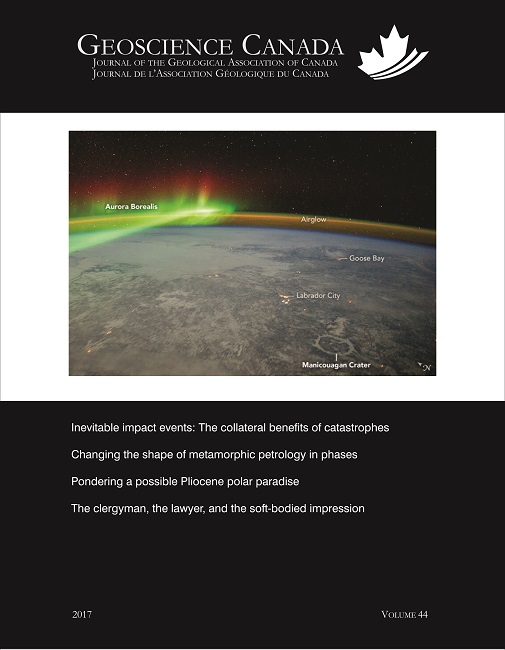Published 2017-04-20
How to Cite
Abstract
This short summary presents selected results of an ongoing investigation into the feedbacks that contribute to amplified Arctic warming. The consequences of warming for Arctic biodiversity and landscape response to global warmth are currently being interpreted. Arctic North American records of large-scale landscape and paleoenvironmental change during the Pliocene are exquisitely preserved and locked in permafrost, providing an opportunity for paleoenvironmental and faunal reconstruction with unprecedented quality and resolution. During a period of mean global temperatures only ~2.5°C above modern, the Pliocene molecular, isotopic, tree-ring, paleofaunal, and paleofloral records indicate that the high Arctic mean annual temperature was 11°C–19°C above modern values, pointing to a much shallower latitudinal temperature gradient than exists today. It appears that the intense Neogene warming caused thawing and weathering to liberate sediment and create a continuous and thick (>2.5 km in places) clastic wedge from at least Banks Island to Meighen Island to form a coastal plain that provided a highway for camels and other mammals to migrate and evolve in the high Arctic. In this summary we highlight the opportunities that exist for research on these and related topics with the PoLAR-FIT community.
RÉSUMÉ
Ce bref résumé présente les résultats choisis d'une enquête en cours sur les déclencheurs qui contribuent à l’amplification du réchauffement de l'Arctique. Les conséquences du réchauffement sur la biodiversité arctique et de la réponse du paysage au réchauffement climatique sont en cours d’être interprété. Des dossiers nord-américains de paysage à grande échelle et le changement paléoenvironnementales durant le Pliocène sont exceptionnellement préservés et scellées dans un état de congélation qui fournissant une occasion pour la reconstruction paléoenvironnementale et faunistique avec une qualité et une résolution sans précédent. Pendent une période de réchauffement global seulement ~2,5°C au-dessus de moderne les dossiers, moléculaire, isotopique, annaux de croissance, paléofaunistique et paléovégétation indiquent que l'Arctique a connu une augmentation de la température annuelle moyenne de 11°C–19°C au-dessus de moderne, en montrant un inferieur gradient de température latitudinal qu'aujourd'hui. Il semble que le réchauffement intense pendent le Néogène a provoqué la décongélation et erosion pour libérer les sédiments et créer une plaine côtière continuel et épaisse (> 2,5 km dans lieux) qui a fourni une route pour les chameaux et autres mammifères pour migrer et évoluer dans l’Haut-Arctique. Dans ce résumé, nous soulignons les opportunités qui existent pour la recherche sur ces sujets et les sujets connexes avec la communauté PoLAR-FIT.
